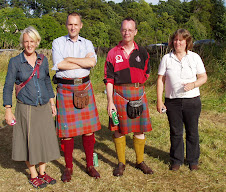Just after I launched yesterday’s post into the ether, I was visited by a Moment of Illumination.
That four-row chart for the edging of my Japanese hat is there to show precisely how the edging goes around the ear-flap. On the third of the four rows, there are decreases at the inner corners – where the flap grows out of the hat – and increases at the outer edge. Obviously, since you’re working in the round, you’re going to encounter one flap from the back and the other one from the front. There is a little code at the top of the chart (it had been puzzling me a lot) with arrows pointing right and left – and with the Japanese characters for “right” and “left”, it turns out – to reassure you that you treat both earflaps the same no matter which direction you’re going. Decrease, increase, increase, decrease.
That’s pretty well it, then. A great many Japanese characters remain un-interpreted, even when you allow for the fact that some of them must say “hat” and “earflap”. And I’m still slightly puzzled by that chain around the earflap, and quite possibly around the entire lower edge of the hat.
I’ve ordered the “Hand Knitting Techniques Book” from Needle Arts, a companion work, apparently, to the stellar “Clear and Simple Knitting Symbols” which I’ve already got. I am hoping that the chain will appear there.
Maybe this pattern doesn't use a provisional cast-on at all? Maybe the chain around the bottom of the hat is just the cast-on edge, with a crochet chain added to the earflaps to facilitate a smooth pick-up all round?
Never have I had such fun with a pattern before casting on a stitch. We’re going to Strathardle today – back by Tuesday or so – and since the whole Strathardle-project thing is up in the air, I think I’m going to try the hat. I’ll take Matt’s socks along to fall back on in case things go wrong.
The pattern seems to use something like DK yarn, a quality in which my stash is sadly lacking. (I’ve got tons of lace-weight, Shetland jumper-weight, and Koigu-and-sock weight, fingering I think you’d call it.) I’ve decided to try using the left-overs from last winter’s Grandson Sweater.
This has been such an exciting intellectual adventure that I wish there was a Japanese sweater pattern which transported me with delight, so that I could throw myself into its interpretation. There are lots I admire, but nothing that makes me want to knit it Right This Moment.
See you next week.
Subscribe to:
Post Comments (Atom)




Is that chain a particular type of cast on? Or, possibly, a crochet edge? Please do let the rest of us know when you find out!
ReplyDeleteIt is fun, isn't it? I like the searching for a symbol on the 'decoder' sheet and then finding it in the pattern. My own little Rosetta stone adventure. Which reminds me that the BBC History of the World in 100 Objects began again, so now I have a months worth of podcasts built up. Thanks for introducing us.
ReplyDeleteI like the idea of figuring things out from the Japanese instructions. That's a challenge. I looked at some of the Japanese knitting books which were on display at the Nordic Knitting Conference - nothing to tempt me right now but ideas for the mental stash.
ReplyDeleteHope you have a lovely weekend. I just finished a shawl and am now knitting a verra plain sweater for around the house.
ReplyDeleteWhat has me interested are the simply-paired make one increases. Even after 20 rounds, I still have to look at my cheat sheet.
Knitting backwards is great. I especially like it for lace where every other row is patterned since I don't have to purl hundreds of stitches and I can always look at the design. Entrelac is a great way to practice since the rows are pretty short. I'd never do entrelac if I had to turn the work all the time.There are some nice videos at youtube. The one by the knitwitch is very good since she goes nice and slow.
ReplyDelete